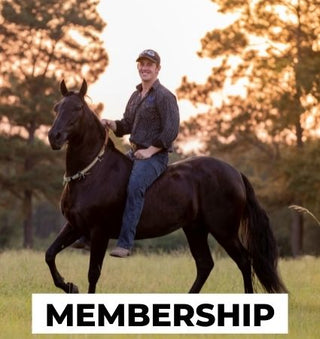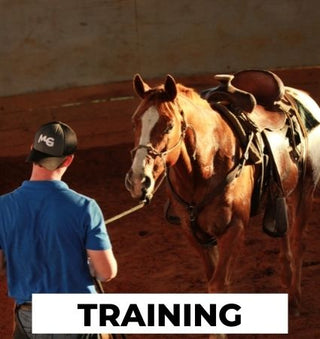Unlocking True Communication Between You and Your Horse
Flexing is a cornerstone of horsemanship, teaching your horse to respond effectively with just one hand. But as your horse advances, it’s time to step up the game—moving from basic to advanced flexing in motion. Let’s dive into the key elements and techniques for achieving this next level of connection.
From Basic to Advanced: The Core Difference
What is Basic Flexing?
Basic flexing focuses on teaching your horse to respond to a single hand. Whether you’re asking them to look left, right, or yield in motion, it’s all about creating respect and responsiveness.
What Changes with Advanced Flexing?
Advanced flexing introduces two hands, allowing you to achieve finer control. Here, the goal is to get your horse to break from the poll—lowering their head and softening through their face.
"Breaking from the poll helps diffuse tension, making the horse less likely to buck or resist."
Why Breaking from the Poll Matters
When a horse’s head is high, they’re on high alert, often ready to resist or misbehave. Lowering the head creates relaxation and submission. For horses prone to bucking or other shenanigans, softening their face and breaking at the poll is a game changer.
Technique Tip:
- Use two hands without releasing the outside rein. This encourages the horse to give at the poll without losing direction.
Practical Techniques for Flexing in Motion
1. Low Vantage Point
Keep your reins below your knee as you travel forward. This low placement ensures your pressure is downward, encouraging the horse to lower their head naturally.
"Halters and snaffles work on direct contact—where your hands go, the horse’s head will follow."
2. Switching Sides
Alternate sides to build symmetry and balance. Use your leg to guide the horse and reinforce where they should find comfort—between your hands.
3. Gradual Softening
With repetition, even a hard-headed horse prone to misbehavior can learn to carry themselves softly. A relaxed, low head position becomes their default, making them safer and more enjoyable to ride.
A Real-Life Example
Take the story of a challenging horse brought in for training. This big, strong horse was notorious for bucking and resisting riders. By softening his face and introducing advanced flexing, he transformed.
"He went from a dangerous bucker to a horse you could ride with spurs and even rope with. His head position and softness were the keys to this transformation."
Speed Challenges and Solutions
Why Do Horses Pick Their Heads Up at Speed?
As you transition to faster gaits, your horse may revert to lifting their head and resisting. This happens because they feel unbalanced or uncentered.
How to Maintain Flex at Speed:
- Prioritize flexing over speed.
- Keep your horse slightly off-center with consistent rein and leg pressure.
- Practice stopping while maintaining flex, reinforcing softness even during transitions.
Advanced Flexing: The End Goal
The ultimate aim of advanced flexing is to achieve a horse that moves with their head low, soft, and responsive at all speeds.
Key Elements of a Finished Horse:
- Breaking from the Poll: The horse lowers their head when you pick up the reins.
- Vertical Flexion: The horse softens their nose, maintaining a vertical position when asked.
- Flex in Motion: The horse remains soft and off-center, giving you greater control and reducing their power to resist.
"Flexing off-center takes away half their power, making them easier to manage and more cooperative."
Try It at Home
Put these techniques to practice with your horse and watch as they become softer, more relaxed, and easier to ride. Advanced flexing is the key to unlocking true partnership and safety in motion.
Thanks for reading!
Get the training and support you need—join the Horse Help Challenge now HERE!









